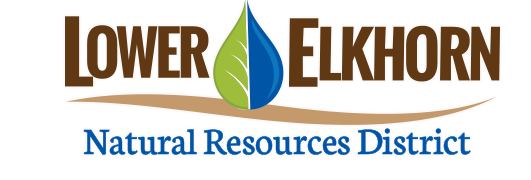What Lies Beneath? --A Report on the Monitoring and Assessment for Groundwater Nitrate Contamination in Cuming, Colfax, and Dodge Counties
/Do you know what’s in your water? High nitrates in your drinking water can pose health risks for you and your family. Increased levels of nitrates can also create additional expense for many private well owners and public water supply systems with the installation of treatment systems to remediate the issue. To learn more about what lies beneath, and to find out what’s in your drinking water, plan to participate in a virtual informational meeting hosted by the Lower Elkhorn Natural Resources District (NRD) at 6:30 p.m. on Thursday, Dec. 17.
Nitrate is found naturally in the environment, however, since nitrate is a primary component of fertilizer and manure, losses can occur in the form of field run-off and leaching into groundwater aquifers. Nitrate pollution can occur in numerous forms including from wastewater treatment plants and septic systems, but losses from fertilizer and manure are the main culprits in agriculture-heavy regions. Nitrate dissolves readily in water and when carried through the soil below plant roots it can easily contaminate groundwater.
“This informational meeting is a step toward informing stakeholders on the results of the groundwater monitoring conducted by the NRD and addressing potential health risks and the critical need to protect our water supply,” said Lower Elkhorn NRD Assistant Manager Brian Bruckner. He continued, “By implementing best management practices, we can work together to reduce groundwater contaminates and protect our drinking water.”
The U.S. Environmental Protection Agency has established the maximum contaminant level (MCL) of nitrate-nitrogen for drinking water at 10 parts per million (ppm). High levels of nitrate can be particularly harmful to infants and children and can lead to methemoglobinemia, commonly known as “blue baby syndrome.” Blue baby syndrome is caused by decreased ability of blood to carry vital oxygen around the body potentially leading to death. Pregnant women and adults with certain health conditions are also at increased risk. Health researchers are looking at the potential links between nitrate contamination in drinking water and incidences of birth defects, pediatric cancer, and Non-Hodgkin’s lymphoma. Bruckner added, “While the body of science is still limited on some of these conditions, the long-term implications of these relationships deserves our attention.”
As part of Lower Elkhorn NRD’s Groundwater Quality Sampling Program, technicians collect annual water samples to document changes or trends in groundwater quality. Beginning in 2018, the NRD prioritized the collection of groundwater samples as part of its routine monitoring in Cuming, Colfax, and Dodge Counties. The results from this groundwater quality study have been provided to well owners and indicate the presence of elevated groundwater nitrate that warrant additional action by the NRD. In October 2020, the Board of Directors voted to begin the formal process of considering a Phase 2 Groundwater Management Area in portions of these three counties. This informational meeting will provide you with additional insight on the monitoring and assessment segment of this process, along with an explanation of the proposed management area boundaries and controls that accompany a Phase 2 Area in the NRD.
Participation links for this informational meeting webinar will be available on the Lower Elkhorn NRD website and Facebook page. The public will have the opportunity to view the webinar and submit comments and questions during the event. For additional information, contact the Lower Elkhorn NRD at 402.371.7313.
Virtual Informational Meeting
A recording of this meeting is available HERE.
Open House Public Hearing
March 25, 2021 | 5:00-7:00 p.m.
Nielsen Center in West Point, Nebraska

